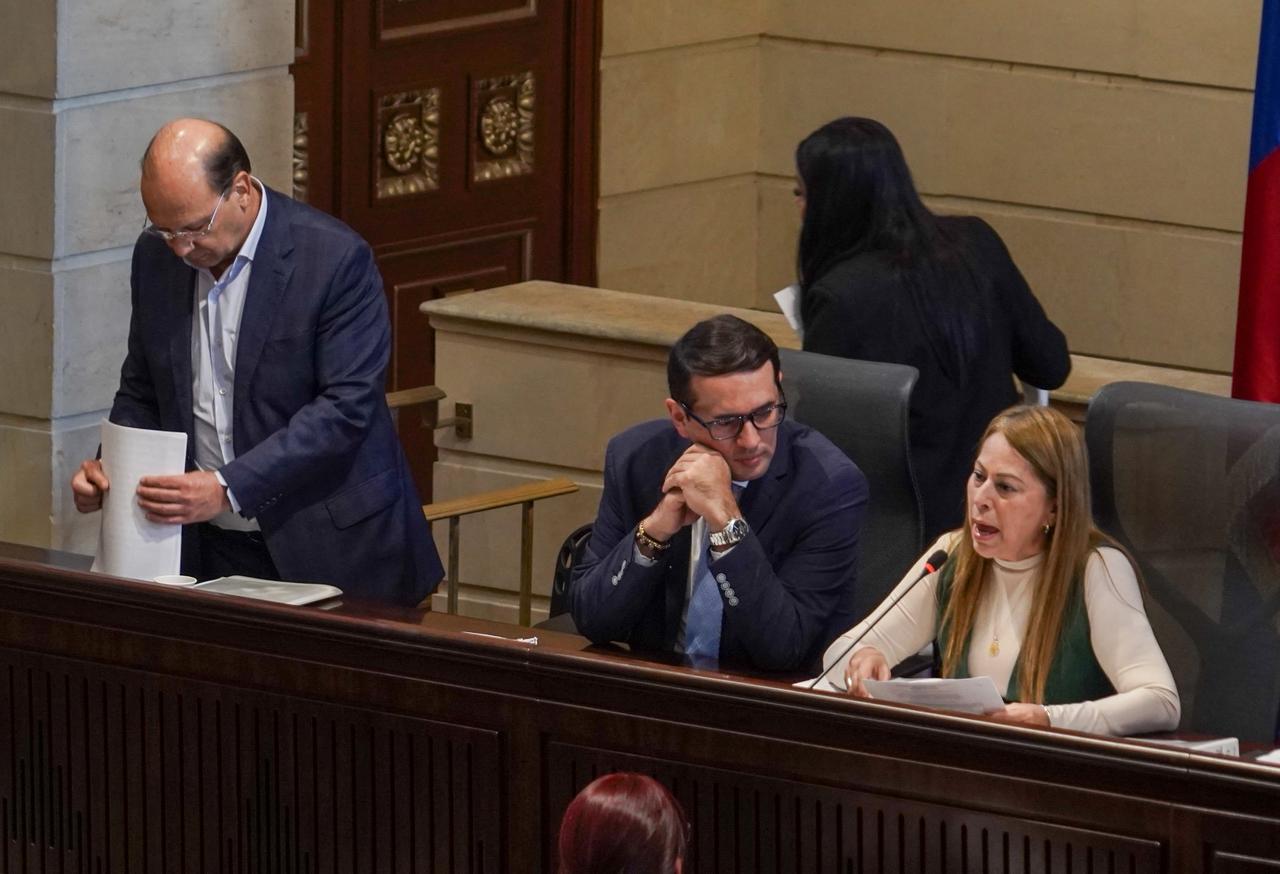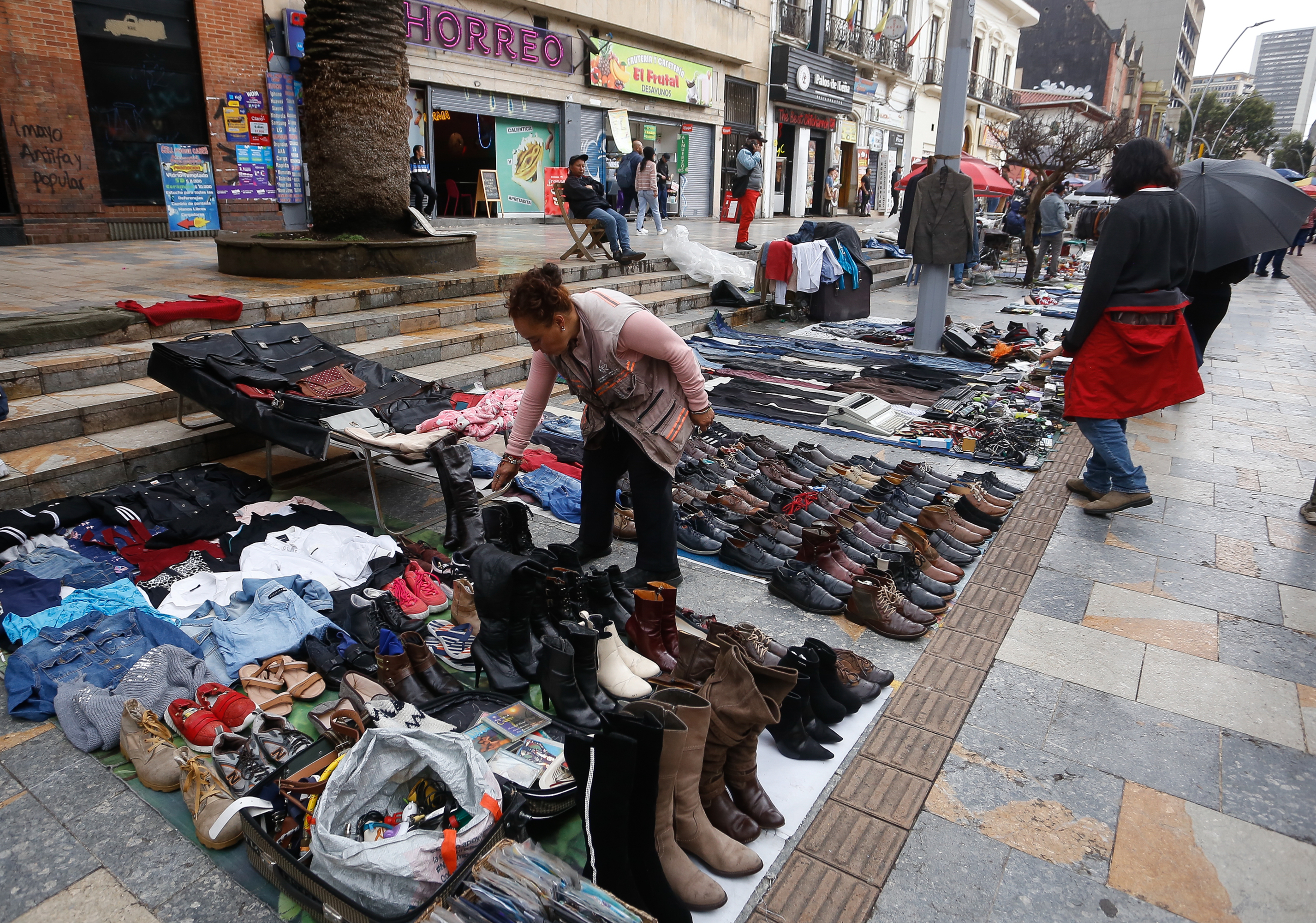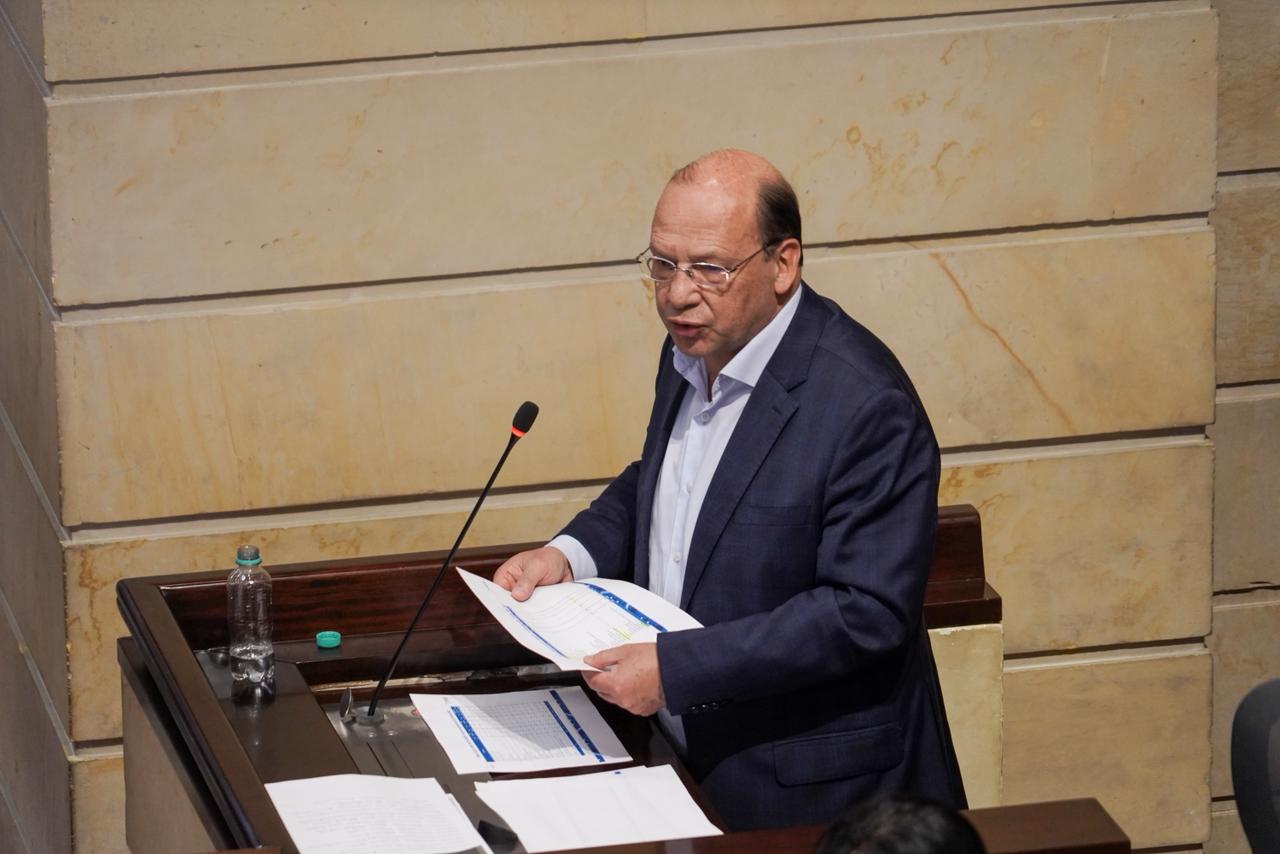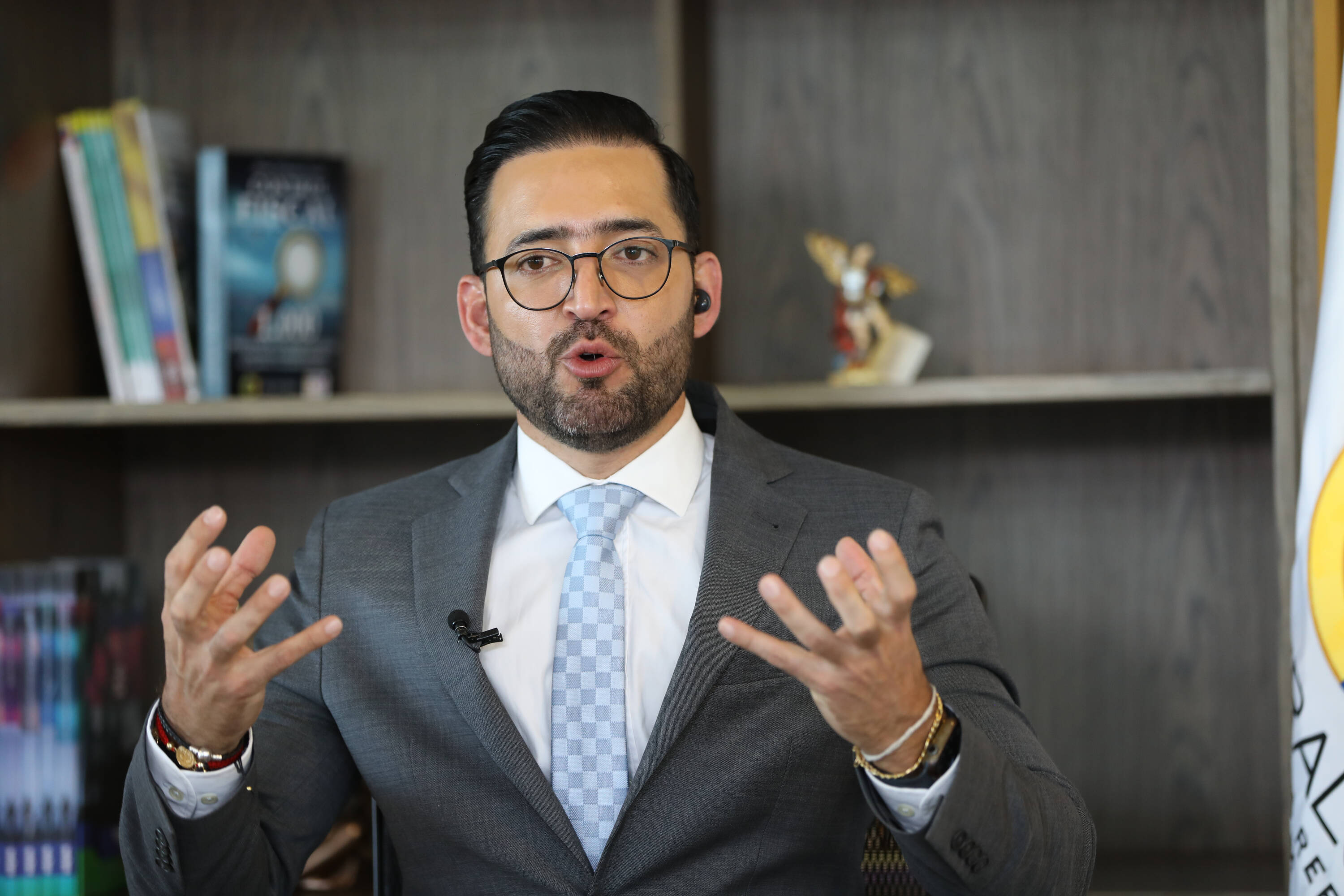The taxes contemplated by the new tax reform of the Petro government and the concerns it generates

There is uncertainty in the country over the new tax reform that Gustavo Petro's government will submit to Congress in a few days to finance the 26.3 trillion pesos in the 2026 General National Budget that it still lacks.
Although the Minister of Finance, Germán Ávila, has been giving clues about the new taxes he is considering, which would range from revising the sales tax (VAT) to imposing more taxes on liquor or the so-called "health" taxes, there is still no certainty as to who will have to start paying more.

Germán Ávila, Minister of Finance, in Congress. Photo: Mauricio Moreno. El Tiempo
In his budget presentation to Congress this week, the minister stated that his plan is to comprehensively review the VAT tax benefits, which are the deductions, exemptions, and special treatments available to taxpayers, such as products exempt from or excluded from the tax. However, he noted that only those applied to the consumption of goods and services by higher-income individuals will be considered. "We are not going to affect the family basket in the tax adjustments," he stated.
This statement raises doubts among various experts. For José Manuel Restrepo, former Minister of Finance and current rector of EIA University, modifying VAT benefits or exemptions ultimately affects the middle class above all. " From any angle, the proposal clearly affects a large portion of Colombians," he stated.
Along the same lines, Gonzalo Hernández, former deputy minister of finance and professor of economics at the Universidad Javeriana, noted that it is not yet clear what the design of these taxes will be and that separating assets according to the income of their consumers is a challenge .
“I wonder if the proposal will end up being similar to that of former Minister Alberto Carrasquilla, modifying the goods exempt from VAT. It would certainly be somewhat paradoxical in political terms. In any case, I doubt the technical and political viability of the reform if the purpose is to cover 26 trillion pesos that are currently unfunded in the budget proposal, a figure to which we must add other needs that must be addressed to maintain a healthy fiscal path. There must be spending cuts,” he asserted.
Likewise, Ávila put forward this week the proposal to increase the tax on liquor and tobacco , which already represent key tax revenues for the various departments. The regions' largest revenue currently comes from taxes linked to "vices," such as beer, liquor, wine, and aperitifs.
READ ALSO

Another point that would be reviewed is income and wealth taxes. In this regard, the proposal will explore the possibility of strengthening their progressivity by revising the rates applicable to higher income brackets, meaning these individuals could end up paying more.

Finance Minister Germán Ávila presents the 2026 Budget to Congress. Photo: Mauricio Moreno. El Tiempo
Likewise, Minister Ávila said this week that he will seek to generate new dynamics for the carbon tax, consumption tax, and "health" taxes. Specifically, in the latest tax reform, at the end of 2022, sugary drinks and ultra-processed foods were already taxed. For example, the latter began paying a 10 percent rate in 2023, 15 percent in 2024, and 20 percent in 2025.
“Talking about additional fees on top of health taxes clearly affects a large portion of consumers in our country because this tax not only generates inflation but also affects the consumption of all Colombians. Furthermore, the proposal aims to impose taxes that affect small businesses, such as those in the coal industry,” Restrepo said.
Although he didn't announce them this week, in June, Minister Ávila stated during the presentation of the "Medium-Term Fiscal Framework" that the project would seek to review other proposals inspired by the tax reform that was dropped by former Minister Ricardo Bonilla and later Diego Guevara, such as VAT on online games of chance and gambling or taxes on digital platforms and churches. He also said that a special tax on coal and oil would be reviewed and tax relief would be proposed.
Additionally, it was also indicated at that time that new tax schemes could be evaluated for activities or products that generate negative externalities, such as the use of pesticides, noise emissions, and devices like vaping.
Is it viable? Beyond the taxes the reform will include, the debate also revolves around whether or not it will pass Congress, as there is a lack of consensus among the various factions, and even the president of the Senate, Lidio García, has repeatedly stated that he doesn't see the potential for a tax reform ahead of an election.
This is the second consecutive year that the government has decided to present an underfunded budget tied to the approval of a tax reform. While last year, 12 trillion pesos remained unresolved, having to be frozen because the reform failed to pass Congress and everything was approved via decree, this year the pending figure reaches 26.3 trillion pesos out of a total of 557 trillion pesos.

The 2026 budget is underfunded by 26.3 billion pesos. Photo: iStock
It's also important to remember that the debate three years ago also raised concerns about the budget's underfunding, due to the inclusion of 10 billion pesos in revenue that would have come from a DIAN litigation arbitration bill that was never approved.
Likewise, there is concern due to the increase in spending in the proposed budget and even the Autonomous Committee of the Fiscal Rule (CARF) stated a few days ago that the Government changed its plan and now foresees an increase in primary spending by 18.2 billion to finance additional resources for health (7.2 billion), energy and gas subsidies (5.7 billion) and investment (5.9 billion).
"It is worrying that the new fiscal strategy seeks to finance persistent expenditures through temporary or uncertain sources; all else being equal, the structural imbalance would increase," said the independent body that oversees compliance with the fiscal rule.
The new reform comes at a time of ongoing fiscal warnings . In June, the government was forced to abandon its legally binding commitment to avoid excessive spending and activated the so-called escape clause, which allows it to ignore fiscal targets for up to three years. Thus, the fiscal deficit, which was projected to close this year at 5.1 percent of GDP, fell to 7.1 percent, and the projection for 2026 was 6.2 percent.
Furthermore, there is growing concern about the government's cash reserves to respond to potential external shocks. According to a report by Banco de Bogotá's Economic Research team, the reserves reached a historic low of 1.8 trillion on August 8, which "barely covers two days of operations."
Furthermore, the Comptroller General's Office has also been issuing warnings about the country's current fiscal and budgetary risks. On the one hand, it indicated that tax collection is below established targets, which could lead to a "defunding" of spending that would entail further budget adjustments or increased debt.
According to the regulatory agency, revenue collection reached 135.4 trillion pesos by June 2025, equivalent to 44.1 percent of the annual target. While it showed a 6.9 percent increase compared to June of last year, compared to the target estimated by the Dian, it represents a deviation of 12.4 trillion pesos.

Carlos Mario Zuluaga, deputy comptroller. Photo: Mauricio Moreno, El Tiempo
On the other hand, the Comptroller's Office says it is concerned about spending , as only 37.7 percent of the total budgeted has been obligated through June, a figure slightly lower by 0.3 percentage points than the same period in 2024.
In fact, during the forum "The Wealth of the Nation: Where is it Produced, Who Manages It, and What is it Invested In?", organized by the National Federation of Departments and EL TIEMPO, Deputy Comptroller Carlos Mario Zuluaga warned that if the financing law to cover the 26.3 trillion pesos is not approved and revenue collection does not pick up in the second half of the year, the total imbalance could exceed 40 trillion pesos.
For now, for César Pabón, director of Economic Research at Corficolombiana, the cuts that must be made to next year's budget to make it viable are those 26 billion pesos, which he already knows are "inconvenient and unnecessary" to obtain.
Inflexible spending For Minister Ávila, the 2026 Budget decisions are determined by the "extremely high" level of spending inflexibility, which represents 509 billion pesos of the total 556 billion pesos.
“Debt service represents 102 billion pesos, which is 15.9 percent of the total budget; pensions reach 88.3 billion pesos (15.7 percent), and personal expenses, 46 billion pesos (12 percent). Of the latter, 81 percent corresponds to payments to the Defense sector, the Police, the Judicial Branch, the JEP, and autonomous bodies,” he explained.
In addition, he asserted that a very high percentage of the deficit is due to decisions outside the National Plan, such as the gap in fuel subsidies, spending on energy and gas subsidies , and the debt they have had to pay for the loan the country took out with the International Monetary Fund (IMF) amid the pandemic.
eltiempo




